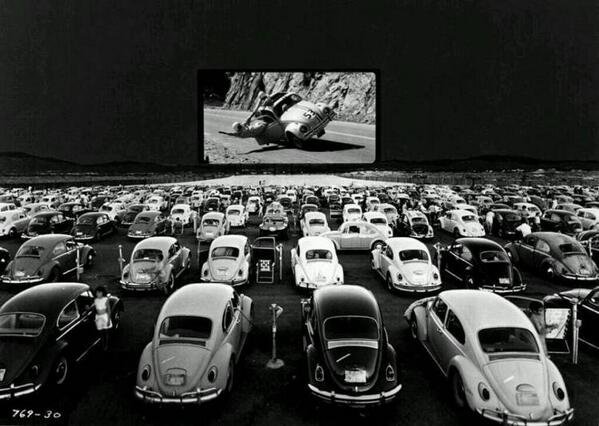The Revenge of the Drive-In
“It’s such a groovy place to talk and maybe watch a show, down at the drive-in”
The Beach Boys, 1964
Any boomer (and probably many Gen Xers), have enjoyed at least a few nights at the local drive-in. These suburban icons reached their peak popularity during the 1960s as an outcome of the post-war automobile boom. After all, we had drive-thru restaurants, drive-thru banks, and drive-thru dairies, why not a drive-in theater? For that matter, why ever get out of the car again?

By the late 1950s over 4,000 drive-ins dotted the US landscape. They became popular with families who could pile the kids in the back of the Ford Country Squire for a cheap night out (no babysitter required), and teenagers looking for an escape from parents and willing to save a buck by hiding a couple of friends in the trunk (not that I would know anything about that).
There’s a certain nostalgia associated with drive-in movies: warm summer nights, the smell of movie popcorn, sitting on the back tailgate watching singing concessions count down the minutes until the sun sets behind an outdoor screen over five stories tall. Listening to the tinny audio from a metal speaker built to fallout shelter specifications. Then the perfectly timed exit, leaving just late enough to watch the end of the movie, but early enough to avoid the rush to the single exit.
Sadly, As color television became more popular in the late 1960s, the drive-in began its slow, inevitable, decline. Why pay two dollars to see Rio Bravo when you could stay home and watch Gunsmoke from the comfort of your BarcaLounger? And the popcorn was free. Ultimately, the rise of home VHS rentals and shopping mall multiplexes in the 1970s and 80s pretty much ended the reign of the venerable drive in theater. The few remaining drive-ins morphed into weekend swap meets or were sold to real estate developers to build even more malls. As of 2007 there were only 400 drive-ins left in the US.
But, just like the T-800 in The Terminator (oh… spoiler alert), it turns out that the drive-in theater refuses to die. In a post-coronavirus world, what better way to enjoy a movie with hundreds of other people than from the relative safety of your personal, hermetically-sealed, rolling box seats? Drive-ins, not quite completely gone to begin with, are beginning to make a comeback.
This makes sense — it’s the near-perfect social distancing activity. A chance to get out of the house and enjoy a nostalgic trip to the halcyon days of the 1960s, when the only thing we had to worry about was the very real prospect of a nuclear winter.
And as more people find the need to safely unquarantine it wouldn’t surprise me to see neo-drive-ins increasing in popularity. And not only for movies. Perhaps we’ll be attending concerts and shows from the relative privacy of our Subarus. It’s easy to imagine a flurry of new drive-ins, first as temporary pop-ups, but maybe even permanent establishments. I hear there might be some J.C. Penney parking lots available in the not too distant future (too soon?).
I, for one, would happily spend a throwback, late summer evening watching a 50-foot-tall Gal Gadot save the world. Who’s with me? You can hide in the trunk.

